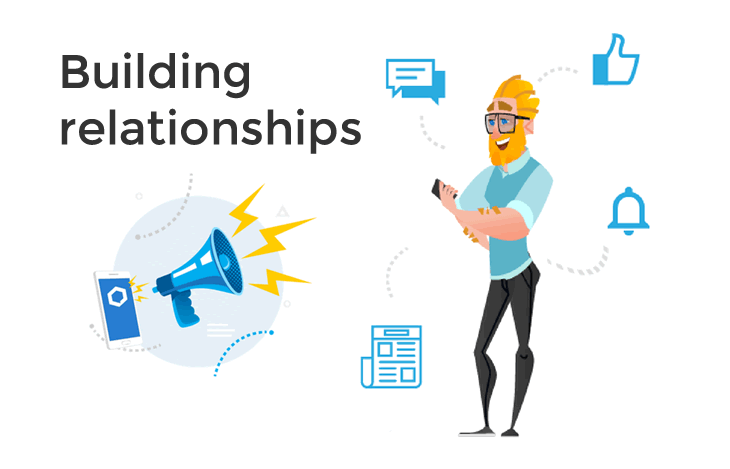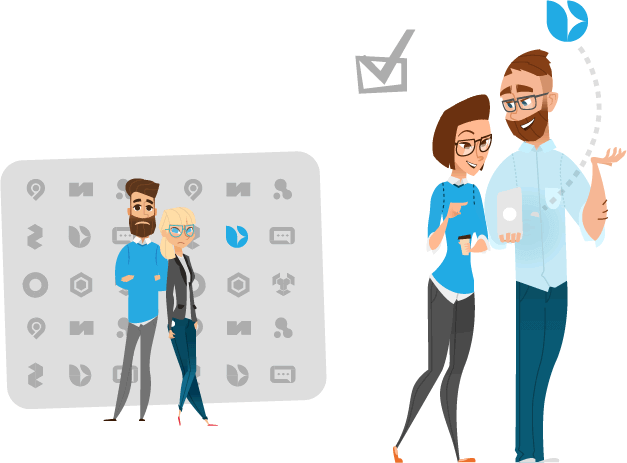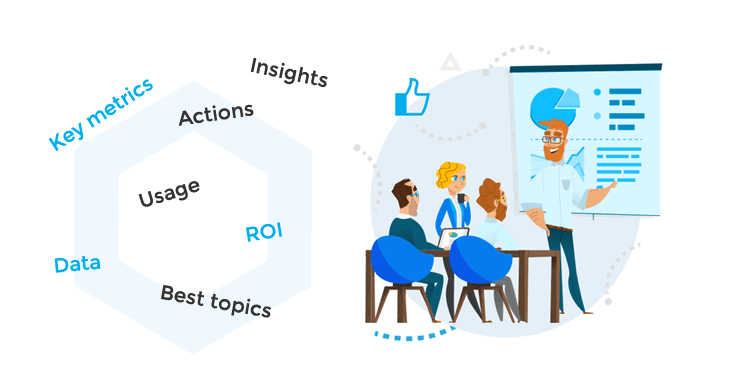What are your actions to capture the attention of your audience, build anticipation, and boost tickets sales before your event even starts?
You may not realize that technology not only adds incredible value to event promotion but it can also help achieve pre-event / on-event / post-event goals.
You know you need to get out there… but how? Let’s start with the basics. You don’t really need to let attendees register just yet (although you could) but you do need your own island on the internet.
A website is a good start. No matter which CMS you want to use (be it Wordpress, Joomla, or CONREGO event page module), your website should be:
- Responsive - the statistics change month to month but over half of all website traffic is generated by mobile devices. If your potential attendees need to scroll the screen sideways or zoom in to read text, you’re doing something wrong. Some of them won’t care enough to keep fighting with your website and will simply give up. Some of them will decide to try and access your website on desktop when they have the chance. And most of them will forget. Who are you left with? Well, dedicated attendees but on your way here, you’ve lost a number of prospects. That’s why you need a responsive website.
- Updated - if this is your main hub, you need to keep it updated to avoid frustration. Remember to keep all the information consistent with other places where your audience may find information on your event.
- Branded - whether you like it or not, your event is a brand. You can use it to your advantage. Build consistent brand identity and voice so that attendees have an impression of your event. They are more likely to trust you in the future if they remember you.
- Informative - make everything clear. When and where does the event take place? What is this all about? When does the registration start and how do I register? Who is the organizer? Make sure these questions are answered and make these answers stand out. If someone wants to read further, they will anyway. You need to think about those who only scan your website, though.
You got your website in place, now it’s time to reach your target audience. Use your social media and, if you have one, your mailing list. Although with the mailing list, I’d wait (unless you just want to send a save-the-date email) until you have the registration form. I’ll tell you why in a minute, let’s talk about the registration form for now.
First, you should apply the KISS principle (Keep It Simple, Stupid) to your registration form. Don’t gather the data you don’t really need. If some information is only required from certain types of attendees, build a conditional form. The point is, don’t make your registrants waste time filling in long forms with information you don’t need right now. You can gather non-vital data later, e.g. using an event app. I don’t think I need to say that the registration form should be responsive as well.
Don’t forget to send your attendees an email when they complete their registrations. Most event management software come with this feature but it doesn’t hurt to turn your attention to this detail.
OK, back to the mailing list. You see, you can import this list to CONREGO (and a number of other event registration applications) as registration records and send them a personalized event mailing with one-time use invitation links. Furthermore, you can use the data you have to present your invitees with a pre-filled registration form, making registration all the more convenient to them. Best-case scenario, they only need to click three times to confirm their participation. And that’s including the click needed to open the invitation email!
Now comes the part that links this question to the next one. There’s one thing you can do at this step to increase engagement during your event. You probably want to issue tickets or entry passes to your event and scan them at the reception desk or on entrance to quickly verify access rights. QR codes are a great way of encoding and reading data quickly, even from screens of smartphones and poor quality printouts. What is more, with CONREGO, you can make them redirect to a set URL. See where this is going? Your staff can scan the code to see if the attendee is authorized to enter, while your attendees can scan the same code to be redirected to any URL. For example, the URL that lets you quickly download an event app to your mobile device!
How do you engage with your audience? How do you deploy information and important data to your attendees?
So, it is right here! Your event has come! Building relationship from the very first second is a key to success in event promotion. Do not forget to say hello to your attendees when your event begins. Write a friendly welcoming post in the news section and send out push-notifications e.g. about the fact that the Meeting Application has a built-in photo booth, which can make your event more fun.
Notifications redirect attendees to your message automatically. Moreover, we bet you have tried hard to get the best speakers because it’s no secret that a great keynote can drive attendance for an event. That is why they deserve to have nice profiles with photos, descriptions, and contact details. It will make them shine. With the help from event app, you have an option to send questions from participants to your performers. You will give your audience a unique chance to confront their ideas with real experts and deploy their presentation through the app because it is obvious that your attendees would rather feel the vibe than take notes during keynotes.
Do you run any activities that allow your sponsors to build awareness? How do you do it?
Of course your event promotion is something more than just your meeting alone or keynote speeches. It should be all-in for your attendees, for your brand, and for your sponsors. It doesn't matter if you would like to only go big with your brand awareness or aim for rich sponsorship. Placing logos on roll-ups, sponsor walls, or handing out leaflets doesn’t really help the sponsors during your event. Why? Because being one of the dozens of brands on a sponsor wall or a webpage makes sponsor company unnoticeable to an average visitor so your sponsor doesn’t really stand out from the crowd. During the event, an average user looks into the mobile phone more than a hundred times! So your brand and your sponsors should go where the people are!
Mobile technology is a real thing. Event app is a significant improvement of the attendee experience, so why not capitalize on it? You can promote your sponsor by placing a banner in the most popular and most opened component in the app - which is the agenda section. That way, you can be 100% sure that the users will see it. This is of course one of the simpler examples but it has long been known that simple solutions bring the best results.
How are you making sure that your next event will be better and your relationships with attendees will continue long after it is over?
CONREGO: If you carried out access control to particular items on the agenda, you have a lot of data about your attendees’ behavior. Use it to determine which topics are most attractive and focus on them the next time you organize this event. I’m sure Meeting Application wants to tell you more about analytics so let me focus on engagement.
What you now have in your event registration software is a valuable list of registration records. All of them (or at least most) have email addresses. You probably also have some content from the conference: session recordings, pictures, etc. Mail them to your attendees. You can even filter them according to selected sessions to segment your list and provide more personal communication. What you could do, for instance, is send them links to the recordings from the sessions they attended first, and later follow up with the sessions they didn’t have the chance to attend. Communication and sharing build strong relationships. Sharing an event gallery with attendees enables them to browse photos and look for familiar faces and themselves (come on, everybody does that… right?). This can form an emotional bond with your event brand, which is great for you and your attendees! Make sure you keep that mailing list to engage your audience before the next event, and maybe give them a discount as a token of appreciation.
MEETING APPLICATION: The organization of the event is not an easy task and we realize how much effort and commitment it requires. That is why we believe that drawing conclusions and preparing for the next event immediately after it is a good practice. Meeting Application allows you to get a summary of key metrics across app adoption, usage, actions, and more. Based on the data, you can go with deep-dive reporting, work with insights on user activity, preferences, and more. Analytics allow you to determine most popular components in app, search through mobile device branding stats, and find topics which were most attractive and speakers who collected most public engagement.
Additionally, with full understanding of the value of your event, you can easily demonstrate ROI for your sponsors.
And no matter if you organize an internal event, a conference, a traidefair, a company meeting, or a music festival - it is always worth considering what can be done better in the next edition of your event. By using this data, you can create so-called Event Canvas (event work area). It is a visual chart with elements describing the event’s promise, how it helps stakeholders to get their jobs done, resolving pains, and creating gains within a set framework of commitment and expected return. The canvas articulates how the behaviour changes as a result of having participated in the event as well as stating the required levels of satisfaction against expectations. Additionally, the canvas outlines the costs and expected revenues in relation to the customer journey (service design) and the instructional design of the event - the approach focused on easing and making gaining knowledge comfortable.
Wojtek Czajkowski - MeetingApplication.com
Łukasz Krawczuk - CONREGO



